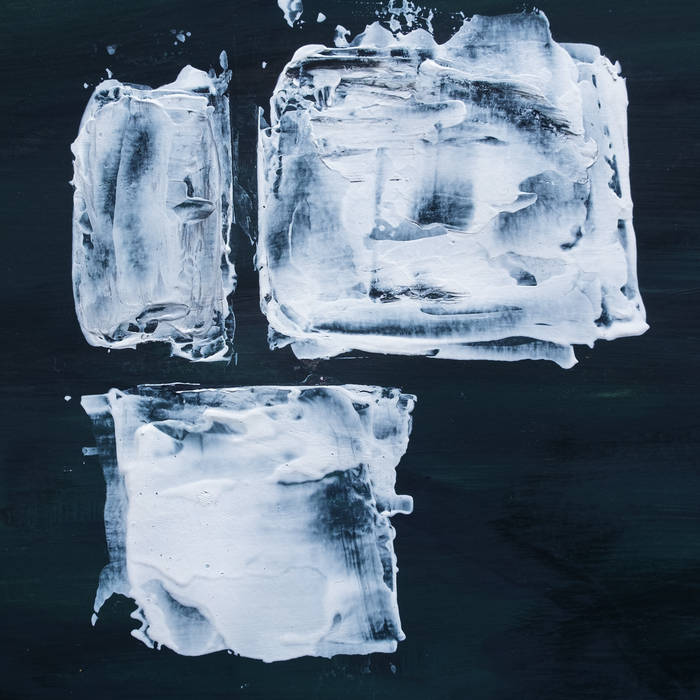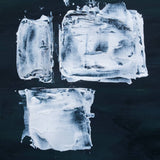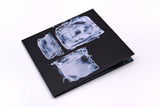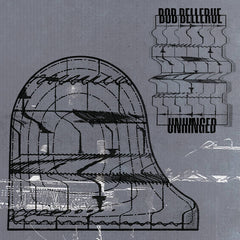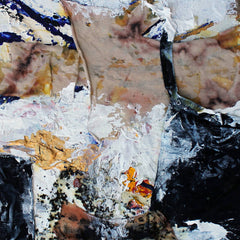Raoul van Herpen // Italian Division CD
- Availability:
An album based on the concept of Italian avant-garde released by Dutch experimental musician Raoul van Herpen on the American noise label Flag Day in July 2021.Digipak and shrink specifications.The following is a commentary by the writer himself.
"In composing these works, I focused on the composition techniques of the 20th and 21st centuries and composed them with three main concepts: serialism, microtonerity and noise. The Italian avant-garde of the last century. Had everything from noise to new music to the mathematics of Pisa's Leonardo (later known as Fibonacci).
In making Composition For Two Oscillators And Two Tape-Recorders, I focused on microtonal music. The basic concept I like and play with is that when the sounds get closer and start to influence each other, the sounds It almost starts to move on its own. Then, beautiful tones and harmonics are generated even though you are not playing, and the work looks like a living thing. The sound that moves at the microtonal pitch makes this work more detailed and almost. It's a unnoticed move. It's all about the fact that the two tape recorders are arranged to act as a large, slow tape delay. Two tape recorders Because of the distance between them, the pitch shifts, which is fed back to the recorder again, the tone is heard again, and it drifts more and more each time. Meanwhile, the two oscillators continue to input to the recorder. As a result, it constantly evolves. It's a very intense audition, but when you try it, you get into a wonderful world of tones, harmonics and layers, as well as a peaceful feeling and a trance.
"Eert Uw Vader En Uw Moeder" was originally an old Mongolian recording of the Bible text "Honor Thy Father And Thy Mother" (it says, but my Mongolian is pretty bad ...) Here I am Played with the intervals between sound and silence and the play effect it gives to the message.The organ chords are actually from the electric Wurlitzer piano.
As I mentioned earlier, I like Syria in composition. "Hooray For Today" is reminiscent of last century's serial "collage" -like composition.Most of the parameters, such as the presence or absence of sound, noise and silence, distant and near views, playing time, effects, sound layers, etc., are made up of serialism.It's all derived from the birthday card I got, filled with lines of different sizes of dots.In fact, I gave every line a different parameter so that every dot meant a different setting for that parameter.
On the other hand, "Italian Divisions" was a little more complicated.The foundation consists of two parts, first with five different noise sources, each with different processing and computation.Using the Fibonacci sequence, I was able to divide it into sound and silence and structure it.After that, I used various tools to shrink, expand, and granulate all the noise into a work full of beautiful noise, cracks, and sounds in all directions.If you listen carefully, you can even say that Part 2 is about space, Part 5 is about groove, and Part 1 is about harmony and melody. "
Labels and other worksplease use this form. ///Click here to see more Flag Day Recordings releases available at Tobira.
----------------------------
Text by Flag Day Recordings:
"While composing these pieces, I focused on the 20th and 21st-century composition techniques in three main concepts: Serialism, Microtonality, and Noise. You could almost say the Italian Avant-garde of the last century had it all: noise, new music, and the math of Leonardo of Pisa, later known as Fibonacci.
In making "Composition For Two Oscillators And Two Tape-Recorders" I focused on microtonality. The basic concept I like and play with is when tones get close and start to interact with each other, they happen to move almost by themselves. Like this, Tones moving in microtonal steps makes this work with more detail and almost imperceptible movement. This is all enhanced by the two tape-recorders placed in a Because of the distance between the two recorders the pitch shifts, this is again fed back into the recorder to hear the tone again, and again each time drifting more and more. Meanwhile, This results in an ever-ongoing and evolving process. It is a very intense listen but when you go for it, you get a sense of peace and a state of trance, let alone the wonderful world of timbre and harmonics and layers you enter.
"Eert Uw Vader En Uw Moeder" is originally an old Mongolian recording of the biblical text "Honor Thy Father And Thy Mother" (so it says, my Mongolian is pretty bad ..) Here I played with the spacing of sound and silence and A fun little detail, the organ chords are, in fact, from an electric Wurlitzer Piano.
As I mentioned, I love serialism in my compositions. "Hooray For Today" reminds me of the serial "collage" like compositions of the last century. Most of the parameters are configured by serialism, like, whether there is sound, noise or silence. In practice, I gave every, this is all derived from a birthday card I got, that is filled with lines with different sized dots on it. line a different parameter where every dot means a different configuration of that parameter.
The foundation consists of two parts starting with 5 different noise sources which all had different handlings and operations. Using the Fibonacci sequence I was able to divide and structure it into sound and / or silence. Building onwards by using different tools to contract, expand and granulate all the noises to a piece full of beautiful noise, cracks, and sounds in every direction. If you listen carefully, you could even say that part 1 is about space , part 2 locks in grooves and part 3 embraces harmony and melody. "
Artist: Raoul van Herpen
Label: Label: Flag Day Recordings
An album based on the concept of Italian avant-garde released by Dutch experimental musician Raoul van Herpen on the American noise label Flag Day in July 2021.Digipak and shrink specifications.The following is a commentary by the writer himself.
"In composing these works, I focused on the composition techniques of the 20th and 21st centuries and composed them with three main concepts: serialism, microtonerity and noise. The Italian avant-garde of the last century. Had everything from noise to new music to the mathematics of Pisa's Leonardo (later known as Fibonacci).
In making Composition For Two Oscillators And Two Tape-Recorders, I focused on microtonal music. The basic concept I like and play with is that when the sounds get closer and start to influence each other, the sounds It almost starts to move on its own. Then, beautiful tones and harmonics are generated even though you are not playing, and the work looks like a living thing. The sound that moves at the microtonal pitch makes this work more detailed and almost. It's a unnoticed move. It's all about the fact that the two tape recorders are arranged to act as a large, slow tape delay. Two tape recorders Because of the distance between them, the pitch shifts, which is fed back to the recorder again, the tone is heard again, and it drifts more and more each time. Meanwhile, the two oscillators continue to input to the recorder. As a result, it constantly evolves. It's a very intense audition, but when you try it, you get into a wonderful world of tones, harmonics and layers, as well as a peaceful feeling and a trance.
"Eert Uw Vader En Uw Moeder" was originally an old Mongolian recording of the Bible text "Honor Thy Father And Thy Mother" (it says, but my Mongolian is pretty bad ...) Here I am Played with the intervals between sound and silence and the play effect it gives to the message.The organ chords are actually from the electric Wurlitzer piano.
As I mentioned earlier, I like Syria in composition. "Hooray For Today" is reminiscent of last century's serial "collage" -like composition.Most of the parameters, such as the presence or absence of sound, noise and silence, distant and near views, playing time, effects, sound layers, etc., are made up of serialism.It's all derived from the birthday card I got, filled with lines of different sizes of dots.In fact, I gave every line a different parameter so that every dot meant a different setting for that parameter.
On the other hand, "Italian Divisions" was a little more complicated.The foundation consists of two parts, first with five different noise sources, each with different processing and computation.Using the Fibonacci sequence, I was able to divide it into sound and silence and structure it.After that, I used various tools to shrink, expand, and granulate all the noise into a work full of beautiful noise, cracks, and sounds in all directions.If you listen carefully, you can even say that Part 2 is about space, Part 5 is about groove, and Part 1 is about harmony and melody. "
Labels and other worksplease use this form. ///Click here to see more Flag Day Recordings releases available at Tobira.
----------------------------
Text by Flag Day Recordings:
"While composing these pieces, I focused on the 20th and 21st-century composition techniques in three main concepts: Serialism, Microtonality, and Noise. You could almost say the Italian Avant-garde of the last century had it all: noise, new music, and the math of Leonardo of Pisa, later known as Fibonacci.
In making "Composition For Two Oscillators And Two Tape-Recorders" I focused on microtonality. The basic concept I like and play with is when tones get close and start to interact with each other, they happen to move almost by themselves. Like this, Tones moving in microtonal steps makes this work with more detail and almost imperceptible movement. This is all enhanced by the two tape-recorders placed in a Because of the distance between the two recorders the pitch shifts, this is again fed back into the recorder to hear the tone again, and again each time drifting more and more. Meanwhile, This results in an ever-ongoing and evolving process. It is a very intense listen but when you go for it, you get a sense of peace and a state of trance, let alone the wonderful world of timbre and harmonics and layers you enter.
"Eert Uw Vader En Uw Moeder" is originally an old Mongolian recording of the biblical text "Honor Thy Father And Thy Mother" (so it says, my Mongolian is pretty bad ..) Here I played with the spacing of sound and silence and A fun little detail, the organ chords are, in fact, from an electric Wurlitzer Piano.
As I mentioned, I love serialism in my compositions. "Hooray For Today" reminds me of the serial "collage" like compositions of the last century. Most of the parameters are configured by serialism, like, whether there is sound, noise or silence. In practice, I gave every, this is all derived from a birthday card I got, that is filled with lines with different sized dots on it. line a different parameter where every dot means a different configuration of that parameter.
The foundation consists of two parts starting with 5 different noise sources which all had different handlings and operations. Using the Fibonacci sequence I was able to divide and structure it into sound and / or silence. Building onwards by using different tools to contract, expand and granulate all the noises to a piece full of beautiful noise, cracks, and sounds in every direction. If you listen carefully, you could even say that part 1 is about space , part 2 locks in grooves and part 3 embraces harmony and melody. "
Artist: Raoul van Herpen
Label: Label: Flag Day Recordings

